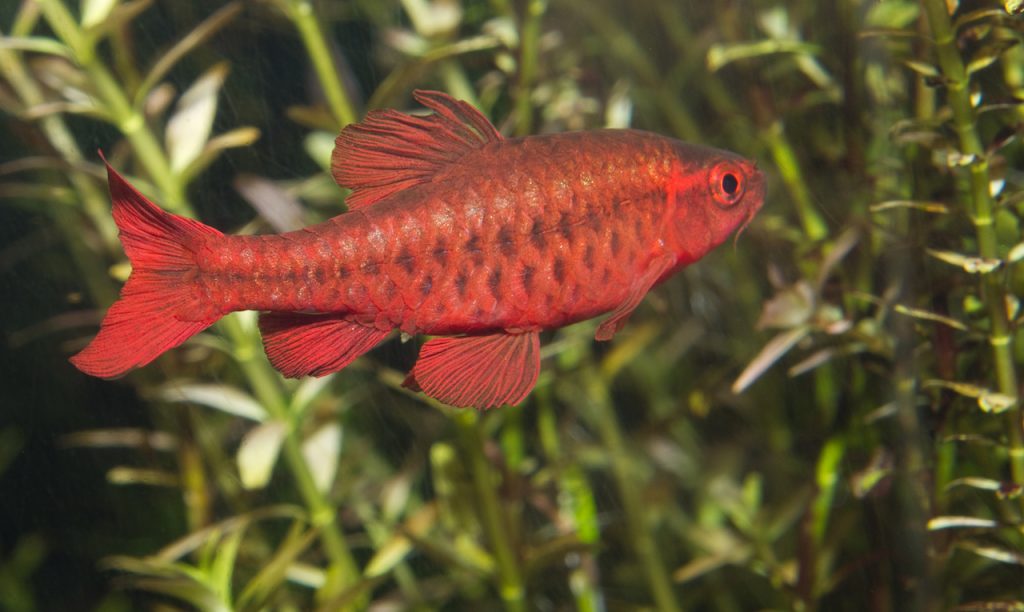
Source: flickr.com | Brian Gratwicke
The Cherry Barb (Puntius titteya) — also known as the Red Cherry Barb — is a small fish that gets its name because of its deep, red coloring. This freshwater tropical fishs' natural habitat is in the waters of Asia near Sri Lanka and the Kelani.
In the wild, this fish prefers streams that are shallow and slow moving and with plenty of foliage for cover. Unlike the Tiger Barb, which has a stocky appearance, the Cherry Barb is more compact and slender. These fish make a great starter fish for the beginning hobbyist due to their hardy nature and temperament.
Table of Contents
Tank Considerations
The Cherry Barb is an active swimmer and will make use of all parts of the tank, so be sure to give them plenty of open swimming area. They also need plenty of cover to dart into in case they feel threatened, so plan on giving them ample planted areas in which to hide. Cherry Barbs grow to about 2 inches, which make them ideal for a smaller tank. They can be happy by themselves in a tank, but they are a schooling fish, and a group of five or more would make them feel more comfortable. If you do plan on housing a school of cherry barbs, plan on at least a 10 gallon tank.
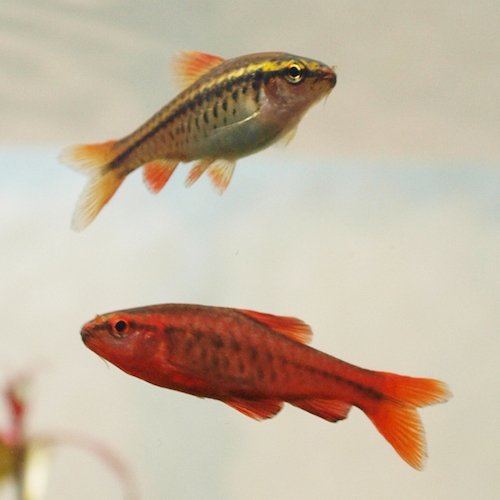
Source: wikimedia.org | Akino yuugure
The water quality these fish prefer is as follows: temperature 73˚-79˚ Fahrenheit, pH 6.5-7.0 and hardness range 2-18 dGH. Water changes should be performed at 25-50% once a month or 20-25% every other week if your tank is crowded.
As mentioned, these fish have a decent temperament, and while they can be shy, they do well in a community tank provided they’re not housed with overly aggressive tank mates.
If you plan on putting a group of these in a smaller tank such as a 10 gallons, make sure you perform regular water tests and water changes. Water parameters can quickly shift in a smaller tank, which can poison fish, which is why it’s vital to stay on top of things before they get ugly.
Health & Care
Like other fish in the barb family, the Cherry Barb is a very hardy fish and doesn’t easily succumb to diseases provided they’re in a well-maintained aquarium. However, if you let your water quality to get out of control, these fish can develop ich, or white spot disease. A good rule of thumb to prevent this is to perform regular water changes, regular water tests and to quarantine any new additions to your tank, including plants to prevent disease. Diet also plays a role in helping your fish maintain a strong immune system, so be sure to feed your fish high quality food and give them the proper nutrition.
Lastly, stress can be a cause of disease. Fish can become stressed due to poor water conditions, but aggressive tank mates can cause stress as well. With a little planning and diligence, you can keep your fish healthy and disease free, and they can easily live 5-7 years.
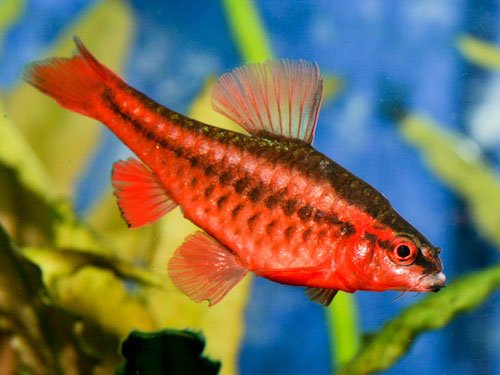
Source: friendsinsoggyhomes.com
Diet
Cherry Barb fish are omnivores and will happily accept a wide variety of foods including high quality flake food as well as live and frozen foods. It’s a good idea for flake food to make up the bulk of their diet, and then add in a meaty treat every now and then, such as brine shrimp (live or frozen) or blood worms. To make sure food isn’t going to waste, most experts say to give the fish no more than they can consume in 3 minutes or less.
Breeding
If you want to try your hand at breeding these fish then you’re in luck because they’re easy to breed.
While it’s difficult to determine the sex of these fish when they’re young, the adult males appear to be a deeper shade of red and become slimmer while the females are a little fatter.
Like many barbs, the cherry barb is an egg layer and prefer to spawn in an area rich with plants for cover. They will deposit their eggs on the leaves.
For breeding, it’s recommended that you make use of a specialized breeding tank. This is a tank separate from your community tank where the breeding fish will be housed by themselves. Water should be moderately hard — 12 dGH and a pH of 6.0-6.5 and a temperature range of 74-79˚ Fahrenheit.
Once these fish spawn you’ll have to remove the adults because they’ll eat the eggs. Eggs normally hatch in about 24 hours and you’ll have to pay close attention to the water quality lest it becomes polluted from waste, which will kill off the fry.
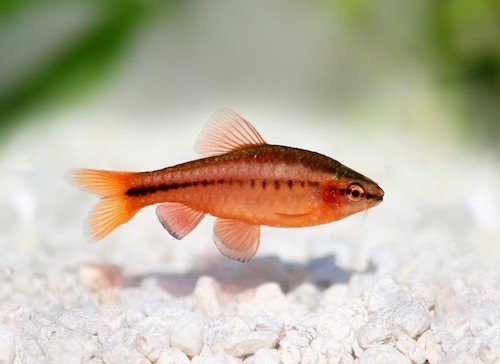
Source: petyak.com
Summary
- Fish Size: 2 inches
- Tank Size: 10 gallons
- Diet: Omnivore
- Water Temperature: 73˚ – 79˚ Fahrenheit
- Water pH: 6.5-7.0
- Water Hardness: 2-18 dGH
- Breeding: Easy
Cherry Barbs are fun little fish to keep whether you’re a beginner or an advanced hobbyist. As active swimmers, it’s entertaining to watch them dart from one place to the other. These fish are very easy to keep, and with proper diet and regular water changes, they can provide many years of pleasure.
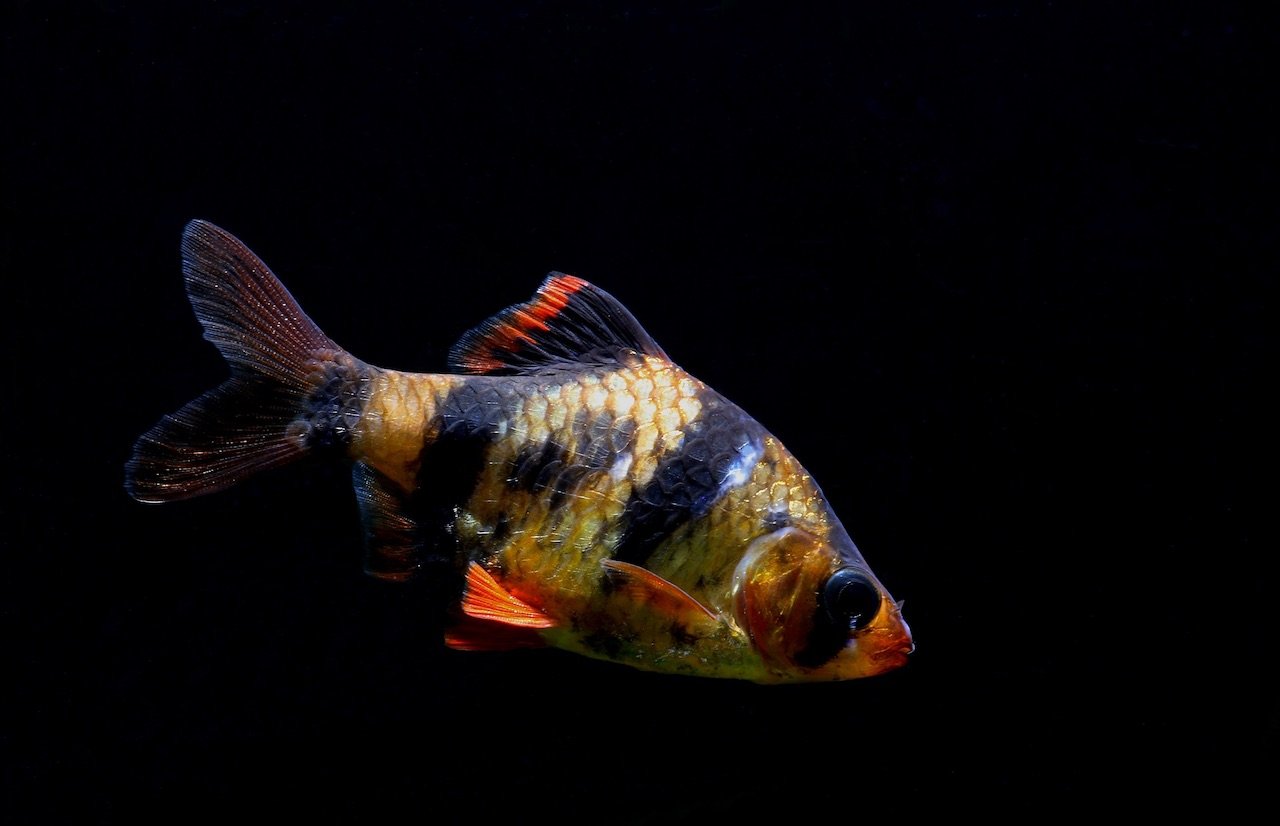
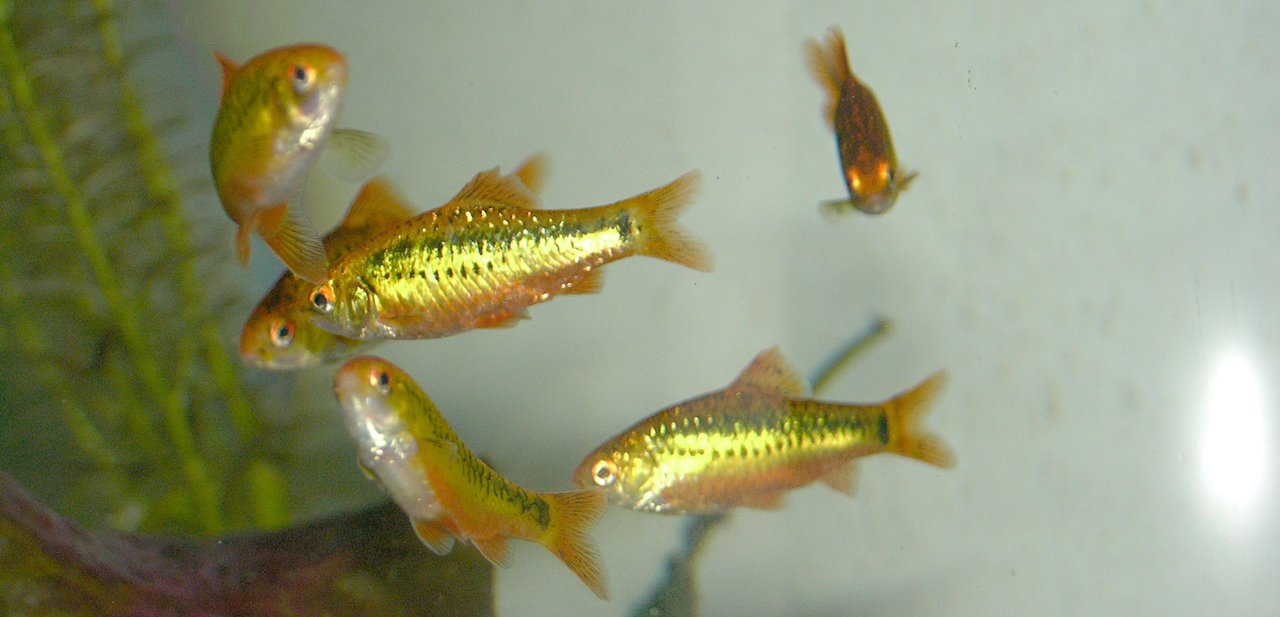

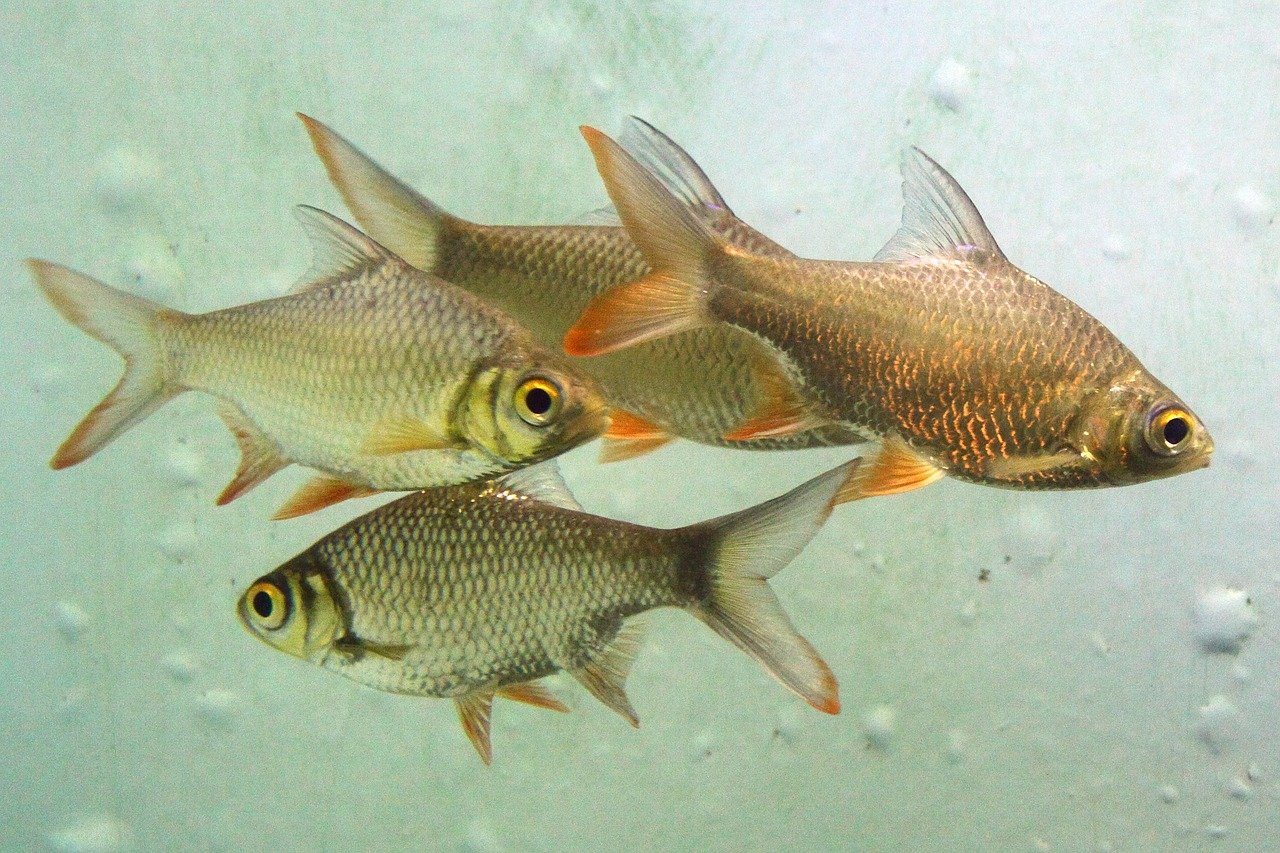

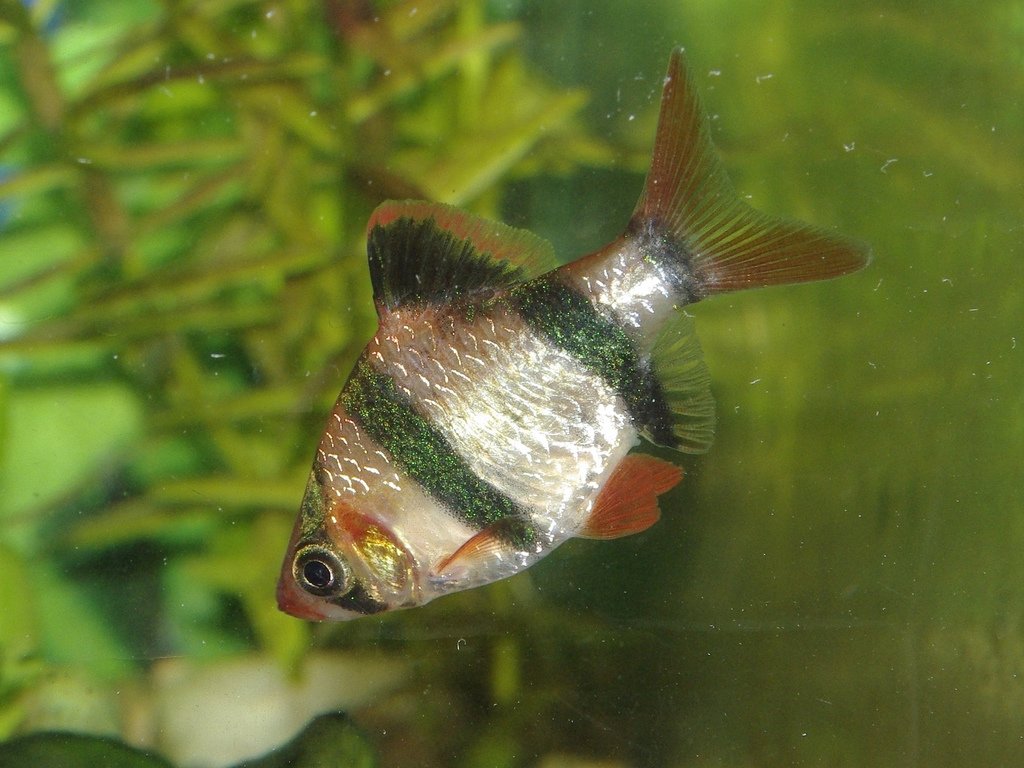
Leave a Reply